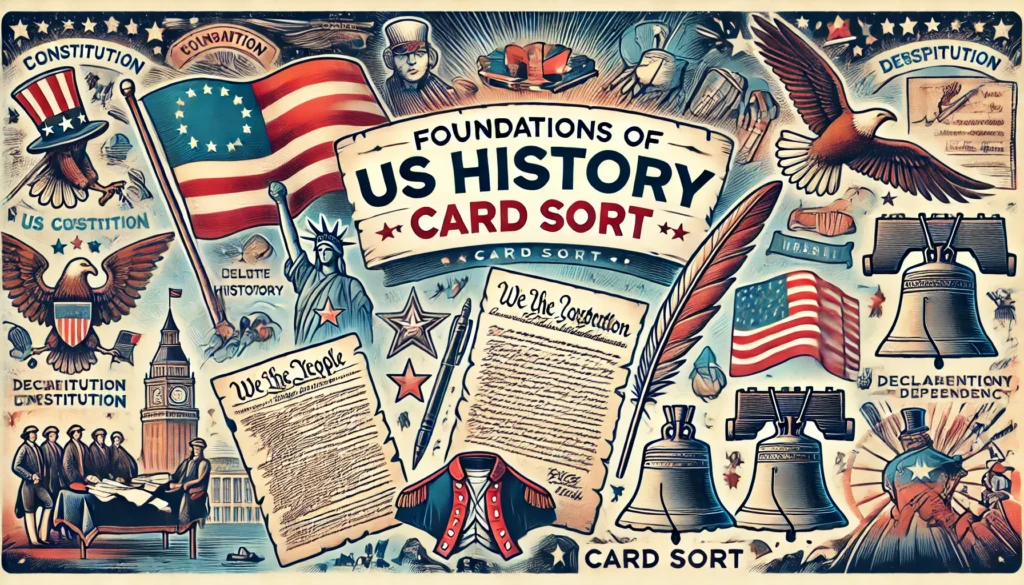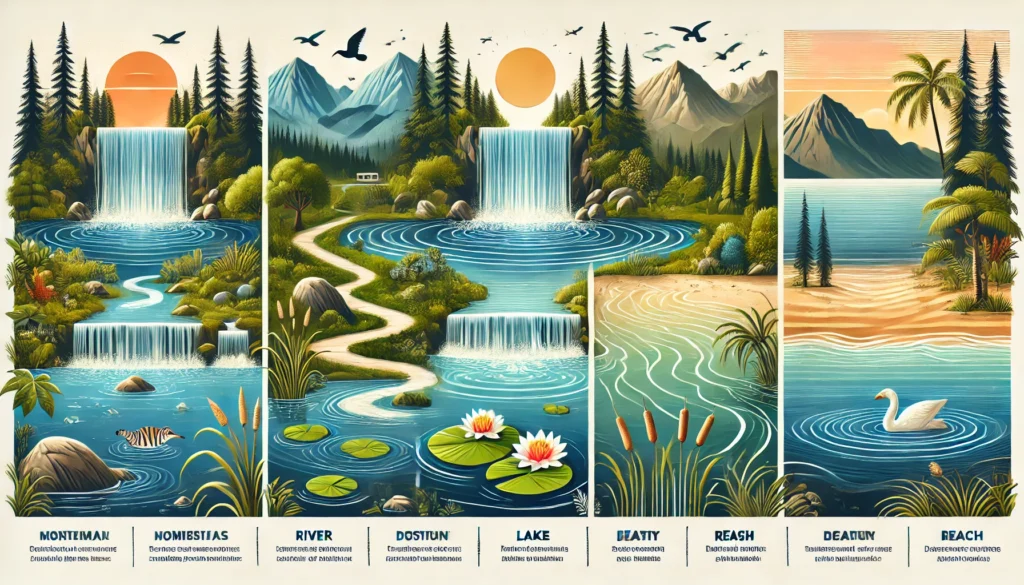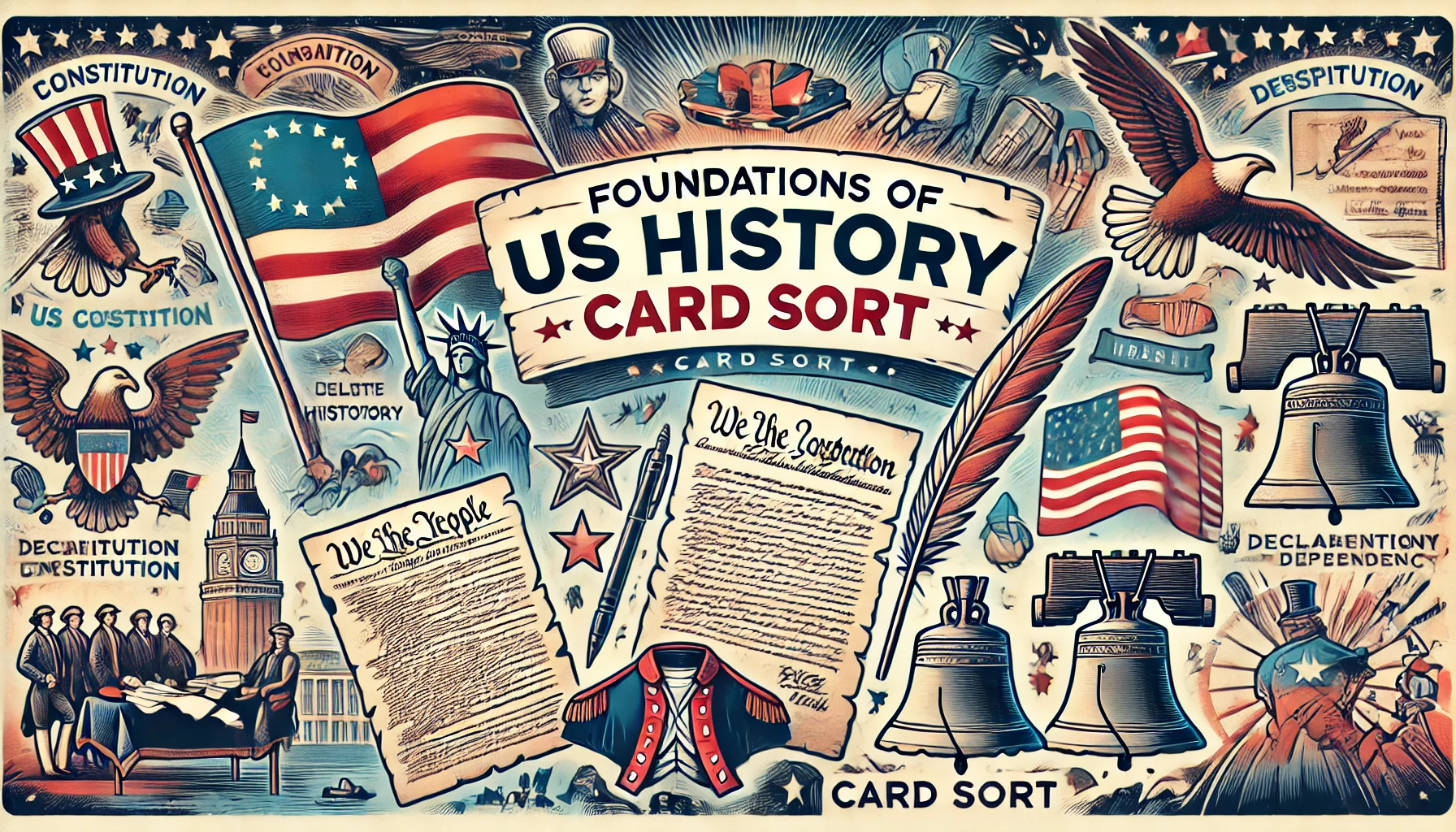Discover the power of the Foundations of US History Card Sort PDF. It’s a detailed teaching tool that fits perfectly with the U.S. History I Course Overview. This resource gives you the skills to analyze history and geography, helping you explore America’s fascinating past.
The course is divided into four nine-week blocks. It takes you from the 6th Grade Orientation to the Civil War and its impact. You’ll learn to link past and present, understand event sequences, and interpret ideas. You’ll also get to know the geography, water features, and land that shaped America’s history1.
You’ll have access to many resources, like project materials, maps, and online sources. This interactive approach makes learning fun and engaging, going beyond the classroom1. The course includes various assessments to check your understanding and knowledge1.

Key Takeaways
- Comprehensive teaching resource aligned with the U.S. History I Course Overview
- Covers essential skills for historical and geographical analysis
- Structured into four nine-week periods encompassing topics from 6th Grade Orientation to the Civil War
- Utilizes a diverse array of resources, including maps, globes, and online sources
- Employs a range of assessment methods to evaluate knowledge and understanding
| Subject | Foundations of US History Card Sort |
| No Of Page | 975 |
| Page Size | 28.7 mb |
Introduction to Geographic and Historical Analysis Tools
Exploring historical events and trends starts with knowing geography. You’ll learn about tools and strategies to make learning fun and meaningful. These tools help students see how geography has shaped history. They’ll get to make historical event cards, interactive history lessons, and printable history resources that excite them.
Understanding Continents and Oceans
Start by teaching your students about the seven continents and five oceans. Use activities like labeling maps and puzzles to make learning fun2. These activities help students understand the world and how it has changed history.
Mastering Basic Geographic Concepts
Teach your students about important geography concepts like latitude and longitude. Use online tools and group projects to help them learn3. This way, they can see history through a geographic lens, gaining a deeper understanding.
Interactive Learning with Maps and Globes
Use maps and globes to make learning visual and interactive. Have students label landmarks and trace important routes2. This hands-on approach makes learning fun and memorable.
By using these tools, you’ll help your students understand history better. They’ll be able to use historical events cards, interactive history lessons, and printable history resources more effectively23.
Foundations of US History Card Sort PDF: Comprehensive Regional Study
Dive into the fascinating world of US history with the Foundations of US History Card Sort PDF guide. This guide helps students explore the different regions of North America. It shows how these areas have shaped the nation’s past1.
Students will enjoy hands-on activities and interactive tools. They will learn about the eight main regions of America. They will study the unique features of each area, like mountains and plains1.
They will also learn about the physical features of these regions. This includes islands and peninsulas. By making salt relief maps, they will understand the diverse landscapes of America1.
The card sort activity is at the heart of this study. It helps students understand the importance of each region. This hands-on approach makes learning fun and engaging1.
Explore American history with the Foundations of US History Card Sort PDF guide. It’s a valuable tool that makes history come alive. Discover the key role of America’s diverse regions in its growth1.
| Topic | Duration |
|---|---|
| Explorers and interactions with West African societies (SOL US I.4a/b/c) | 2 weeks |
| Colonial America, including St. Augustine and the description of 3 economic and 3 religious colonies (SOL US I.5a) | 1 week |
| Relationship with Great Britain and the dissatisfaction leading to revolution (SOL US I.5d & 6a) | 1 week |
| Key events of the revolution and the reasons colonists were victorious (SOL US I.6c & d) | 1 week |
| The first five presidents of the United States (SOL US I.7c) | 1 week |
| Westward expansion territories and reasons (SOL US I.8a/b) | 1 week |
| Civil War battles (SOL US I.9e) | 2 weeks |
| Results of the Civil War (SOL US I.9f) | 2 weeks |
| Results of the civil war (SOL US I.9f) | 1 week |
The Foundations of US History Card Sort PDF guide is a great resource for teachers and students. It offers a detailed, hands-on way to learn about America’s history1.

World history courses are becoming more popular in schools3. This guide shows how to make learning history fun and engaging. It uses history flashcards pdf, hands-on history activities, and American history concepts to help students understand and appreciate history3.
“This program offers an immersive experience in American history concepts that truly brings the past to life for students.”
Whether you’re a new or experienced teacher, this guide is a great tool. It helps explore America’s diverse regions and key events. Start an exciting journey through American history with this guide13.
Water Features and Historical Impact on American Development
Discover how water features shaped the United States’ history. The Great Lakes and maritime trade routes played key roles. They influenced settlement, transportation, and economic growth4.
Major Rivers and Their Historical Significance
Learn about the major American rivers like the Mississippi and Missouri. These rivers were crucial for trade and settlement. They connected different areas, moving goods and people, and helped the nation grow4.
Great Lakes and Coastal Influences
See how the Great Lakes and coasts shaped the U.S. Their shores influenced settlement, commerce, and defense. These areas were vital from the colonial era to today4.
Maritime Trade Routes and Settlement Patterns
Explore the impact of maritime trade on the U.S. Coastal cities like New York and San Francisco became key for international trade. They drew diverse populations, leading to urban growth. These trade networks connected the nation to the world, exchanging goods and ideas4.
FAQ
What is the Foundations of US History Card Sort PDF?
The Foundations of US History Card Sort PDF is a detailed teaching tool. It matches the U.S. History I Course Overview. It teaches key skills for analyzing history and geography.
These skills include using primary and secondary documents. Students also learn to connect past and present, sequence events, and interpret ideas. They also analyze maps.
How is the course structured?
The course is divided into four nine-week periods. It covers topics from 6th Grade Orientation to the Civil War and its aftermath.
What geographic skills does the resource focus on?
This section focuses on developing students’ geographic skills. Activities include locating continents and oceans on world maps and globes.
Students also define key terms like continent and ocean. They learn to distinguish between cities, states, and countries.
What interactive tasks do students engage in?
Students participate in interactive tasks. They label blank outline maps and construct world maps from continent outlines.
They also research ocean information for class presentations.
What resources are included?
Resources include globes, world maps, online databases, and Smart Board activities on longitude and latitude.
What does the section on North American geographic regions cover?
This section covers the eight geographic regions of North America. Students learn to locate and describe these regions on maps.
They investigate their physical characteristics and define key geographical terms. Terms include mountain, hill, plain, plateau, island, and peninsula.
What activities are included in this section?
Activities include shading and labeling regions on outline maps. Students also research and present regional characteristics.
They create comparison charts and construct salt relief maps. A card sort activity reinforces an understanding of regional characteristics.
What water features are covered in the resource?
This section examines the importance of water features in U.S. history. Students locate and identify key water features.
Features include the Great Lakes, Mississippi, Missouri, Ohio, and more. They also identify the Atlantic Ocean, Pacific Ocean, and Gulf of Mexico.
How do the activities explore the influence of waterways?
Activities explore how waterways influenced trade, transportation, and settlement patterns. Students label water features on maps and design custom maps.
They brainstormed on the importance of waterways and created illustrations of geographic features.
What resources are used in this section?
Resources include posters, atlases, photographs, and primary sources. Early maps and Lewis and Clark journal entries are used.
Source Links
- https://www.lcsedu.net/sites/default/files/pdfs/curriculum/pacing-guides/social-studies/6th_grade_ss_us_history1_pacing.pdf – PDF
- https://open.umn.edu/opentextbooks/textbooks/206 – U.S. History – Open Textbook Library
- https://www.aft.org/sites/default/files/harris_bain_13-16_38_0.pdf – PDF
- https://apcentral.collegeboard.org/media/pdf/us-history-urbanization-sf.pdf?course=ap-united-states-history – PDF
